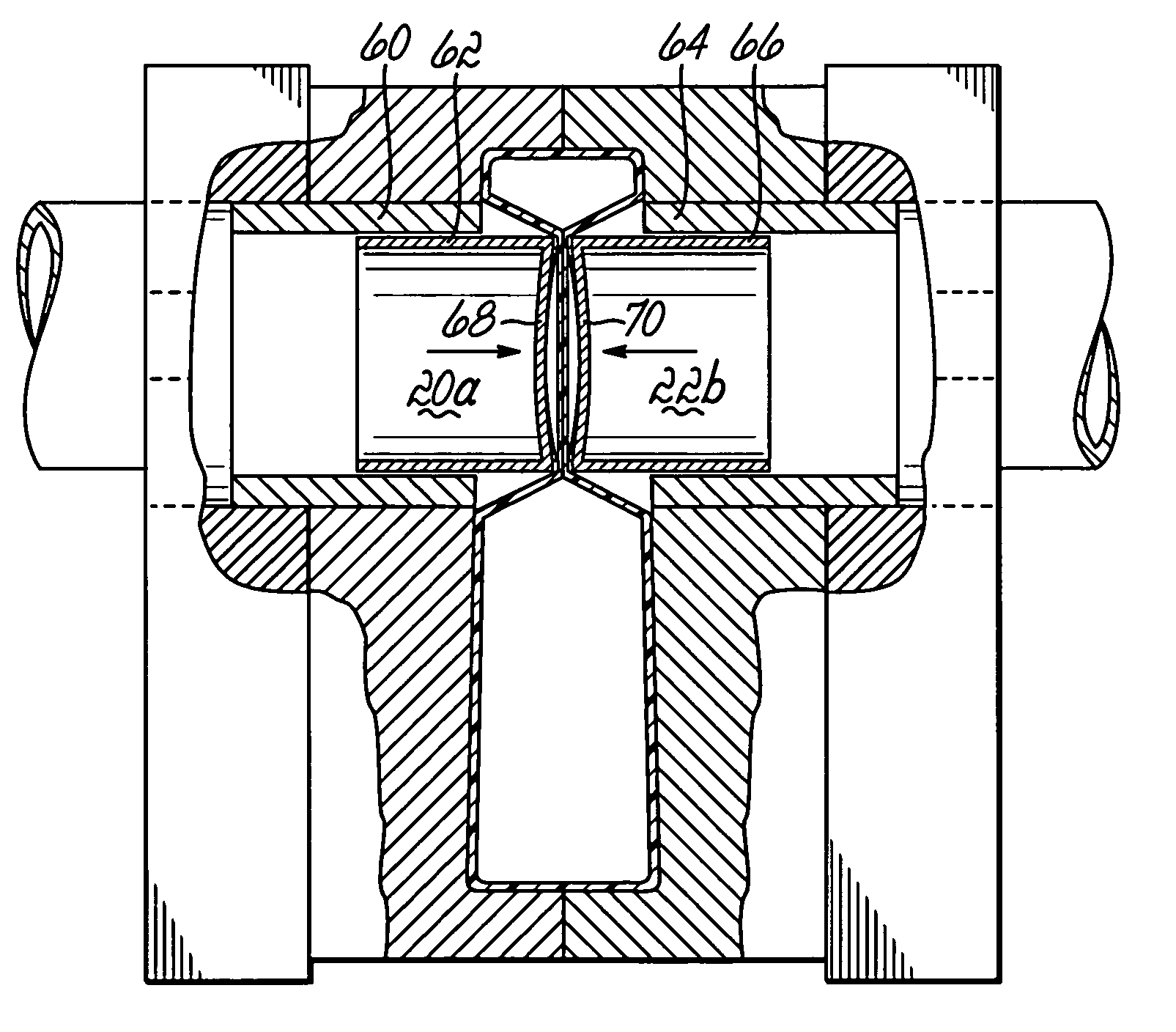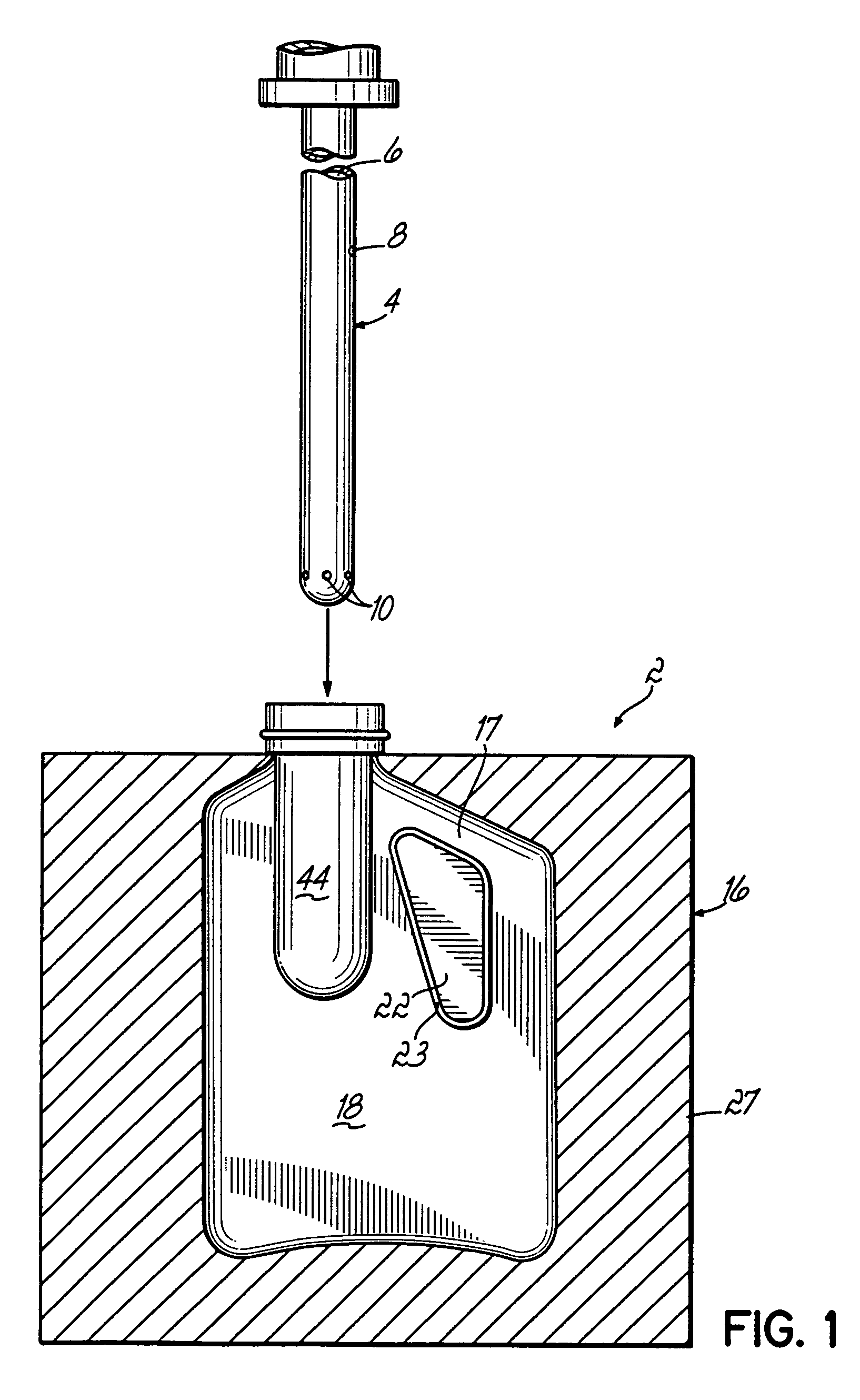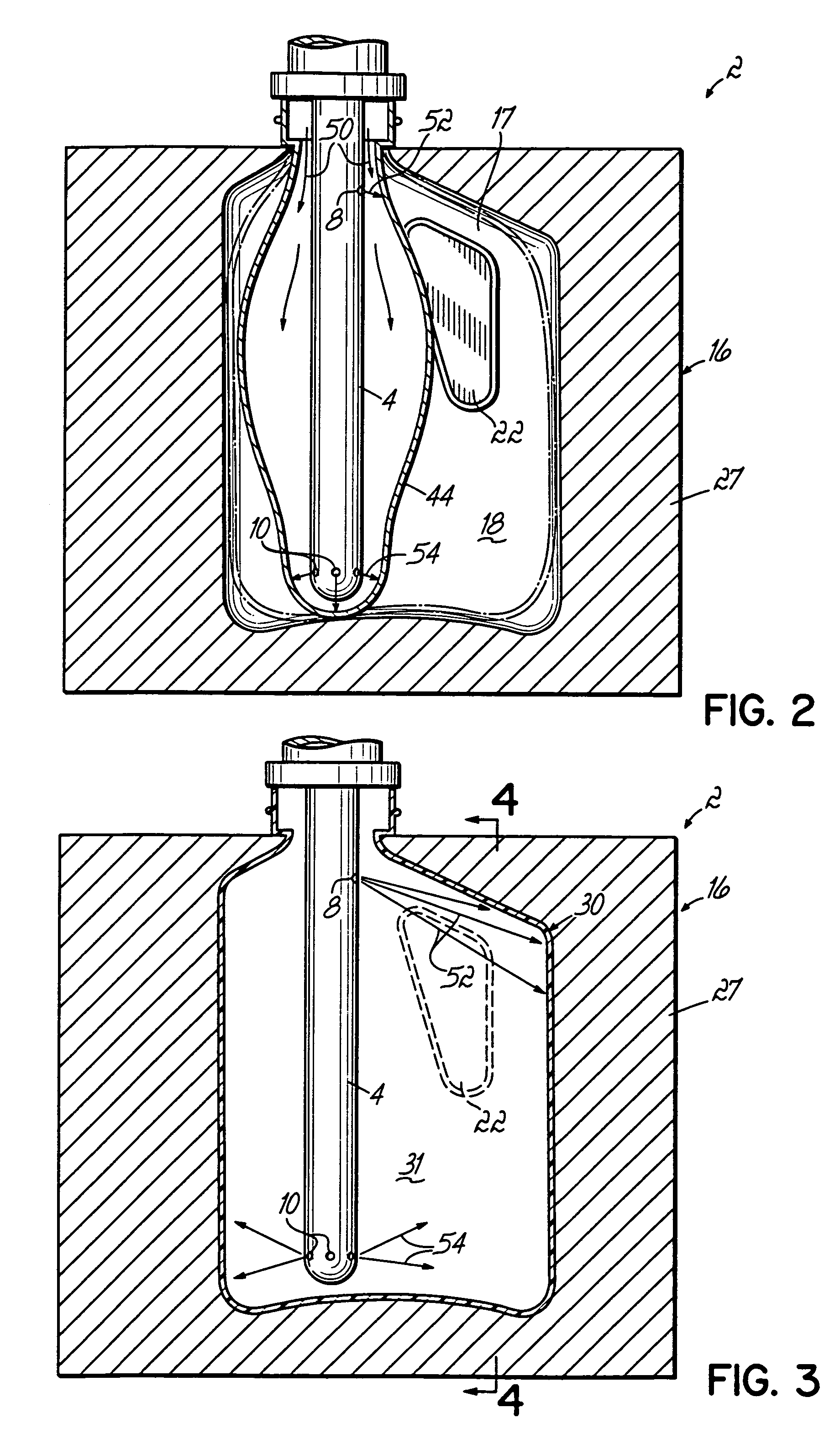Method of making a stretch/blow molded article (bottle) with an integral projection such as a handle
a technology of integral projection and blow molding, which is applied in the field of blow molding a hollow article with an integral projection, which can solve the problems of bottle shattered, bottle shattered, and integrally molded handles that are susceptible to breakage,
- Summary
- Abstract
- Description
- Claims
- Application Information
AI Technical Summary
Benefits of technology
Problems solved by technology
Method used
Image
Examples
Embodiment Construction
[0036]To illustrate and provide a more complete understanding of the preferred embodiment of the present invention, the following description with reference to the drawing figures details a method of making a hollow stretch blow molded bottle of polyethylene terephthalate (PET) having an integral handle extending from the exterior wall thereof. It will be appreciated that the invention is equally applicable for blow molding other thermoplastic materials.
[0037]With reference to FIG. 1, the blow mold apparatus 2 of the present invention is shown having a stretch rod 4. Stretch rod 4 includes a hollow center 6 which is adapted to connect to a source of gas, such as oil-free blow gas. Stretch rod 4 further includes throughhole 8 and throughole 10 located at respective upper and lower ends of the stretch rod 4. Throughholes 8, 10 are in fluid communication with hollow center 6. Stretch rod 4 may also be substantially solid, in which case the blow gas is injected from another source, not ...
PUM
| Property | Measurement | Unit |
|---|---|---|
| stretch temperature | aaaaa | aaaaa |
| surface temperature | aaaaa | aaaaa |
| weight | aaaaa | aaaaa |
Abstract
Description
Claims
Application Information
 Login to View More
Login to View More - R&D
- Intellectual Property
- Life Sciences
- Materials
- Tech Scout
- Unparalleled Data Quality
- Higher Quality Content
- 60% Fewer Hallucinations
Browse by: Latest US Patents, China's latest patents, Technical Efficacy Thesaurus, Application Domain, Technology Topic, Popular Technical Reports.
© 2025 PatSnap. All rights reserved.Legal|Privacy policy|Modern Slavery Act Transparency Statement|Sitemap|About US| Contact US: help@patsnap.com



